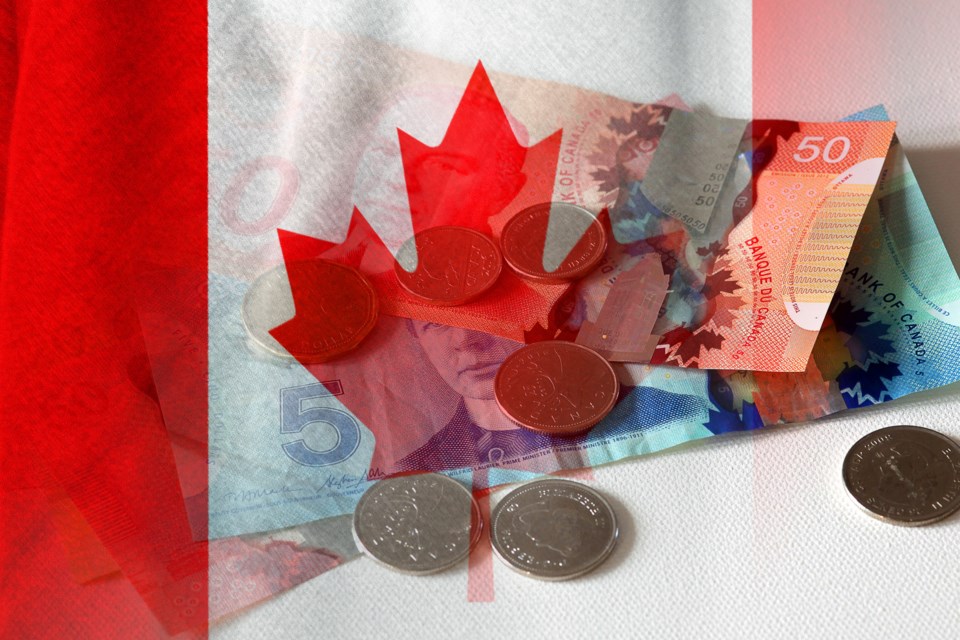For three years now, Canada’s economy has been like a train freighted with debt, inflation and high interest rates chugging uphill.
Inflation followed by the cure for inflation -- higher interest rates -- have slowed everything down, and only now is the peak in sight.
Provided it’s a not a false summit, Canada’s economy may be slowly turning a corner, according to an economic outlook from Deloitte, though it could be a bit more delayed in B.C. than other parts of Canada.
“After three years of economic upheaval, the Canadian economy is beginning to settle down,” Deloitte says in a preface to an economic forecast released today.
“With inflation on a steady downward trend since peaking in June 2022, the Bank of Canada has now begun to ease its policy stance, paving the way for stronger economic growth.
“However, the pace of monetary easing is far from certain, and weak investment and productivity performance continue to pose a risk to Canada’s long-term economic outlook.”
Provincially, B.C.’s economic growth is expected to be more muted than other parts of Canada – notably Alberta and Saskatchewan.
Post pandemic, there was a brief economic rebound in Canada and elsewhere, but supply chain disruptions, massive amounts of government deficit spending, and high oil and gasoline prices helped fuel a level of inflation not seen in Canada since the early 1980s.
For more than two years, inflation in Canada ran hot, with the Consumer Price Index (CPI) hitting 8.1 per cent in June 22.
To tame the inflation, the Bank of Canada took to raising the overnight rate from just 0.25 per cent in 2022, to five per cent in July 2023. It stayed at five per cent until June 5, when the central bank shaved 0.25 per cent off the overnight rate.
The consumer price index (CPI) was 2.9 per cent in May. So while inflation is coming down, it’s still not at the target rate of two per cent, which could mean the Bank of Canada will not cut rates as quickly or by as much as some might hope.
“While interest rates were hiked at a rapid clip from March 2022 to July 2023, our forecast assumes the pace of cuts will be much more gradual,” Deloitte warns.
“After a rate cut in June, we see the Bank (of Canada) holding off until September for a second cut and then moving again in December. Rate cuts are expected to continue throughout 2025 before the overnight rate settles at a neutral level of 2.75 per cent by the end of next year.
“This forecast assumes that inflation will continue to gradually decrease over the next few quarters and then return to the 2 per cent target by the second quarter of next year.
“Recent data suggests that business sentiment in Canada is beginning to recover despite an uptick in insolvencies," Deloitte says.
But the report also points to a deeper underlying malaise – a decade-long weak business investment environment and stagnant productivity.
“Since the 2014 commodity price crash, which caused a steep drop in business investment, labour productivity in Canada has remained essentially flat while unit labour costs (the labour costs associated with producing a fixed amount of output) have increased by more than 30 per cent,” the Deloitte report says.
“This situation is unsustainable -- unlocking more business investments will be key to boosting labour productivity.
“Despite a strong pace of growth -- including one of the best months of job creation ever recorded in April 2024 -- employment (+2.0 per cent) has not kept up with population growth (+3.4 per cent) over the past 12months.
“That has meant the unemployment rate has risen nearly a full percentage point to 6.2 per cent. We expect it will remain elevated for the rest of this year before beginning to fall again in 2025.”
Deloitte is expecting Canada’s real GDP growth to be1.2 per cent in 2024 and 2.6 per cent in 2025.
But in per capita terms, growth will decline this year, with real GDP per person falling by 1.6 per cent in 2024.
As for the provinces, B.C.’s economy is expected to comparatively tepid, compared to Alberta and Saskatchewan.
“The Alberta economy is benefiting from a population surge as Canadians from other provinces flock to Wild Rose Country in search of a lower cost of living,” Deloitte forecasts.
“That and the opening of the Trans Mountain pipeline expansion will keep Alberta growing above the national average, with GDP gaining 1.5 per cent this year and 3.3 per cent next year.
“Finally, growth in British Columbia will be weak in 2024 as its highly indebted households pare back their spending in the face of rising debt servicing costs.”
The biggest weak spot in Canada, however, will be central Canada – Ontario and Quebec.
“We expect GDP growth in Quebec will be particularly muted this year, and the province is forecast to have the weakest growth in the country as relatively soft population growth limits gains in domestic demand.”



